Architecture Books
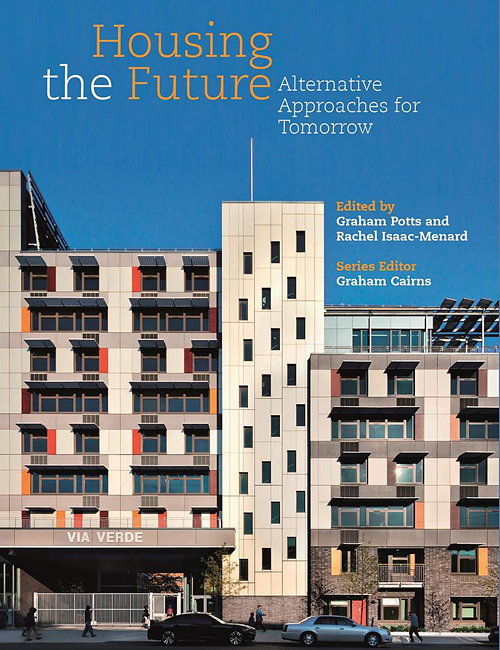
Housing the Future: Alternative Approaches for Tomorrow
Housing The Future - Alternative Approaches for Tomorrow offers three perspectives on the problems of housing today with an eye on tomorrow. It brings together world-leading practicing architects with academics from seven countries and teams of international students. World leaders in the field of residential design, such as UN Habitat Award winner Avi Friedman, present built projects whose design criteria and aims they lay out in text. Academics from the UK, the USA, Spain, Germany and elsewhere follow these project descriptions with extended essays from a more theoretical perspective but remain focused on the realities of practice. Finally, ideas on current housing problems from the next generation of designers are brought together in student projects from Europe and North America.
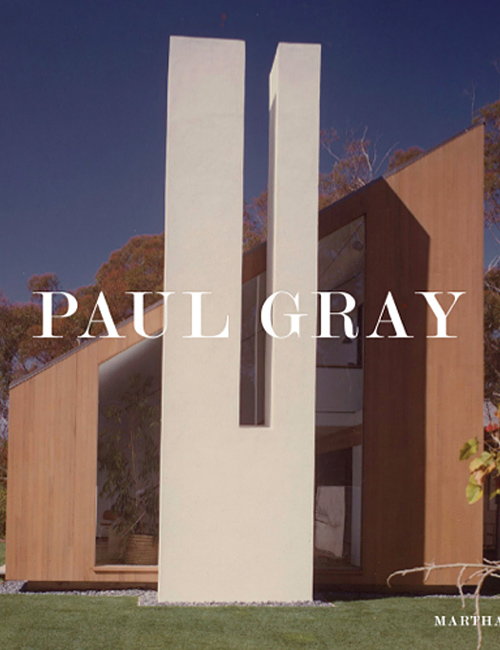
Paul Gray
Consisting of both commercial and residential, built and un-built work, this study attempts to document five decades of architecture that is rooted in a sixties minimalism integrated with recognizable vernacular elements. Living in Santa Barbara, one cannot help but be influenced by the Hispanic / Mediterranean tradition. In this context Gray brought a strong sense of abstract to that tradition much as the early California Modernist, Irving Gill. Gray's work in the seventies and eighties illustrates the architectural styles popular after the "mid-century modern" that dominated during the sixties. The book details how Gray reinterprets The Third Bay Region, Hispanic / Mediterranean and New England vernacular in simple, elegant and timeless structures.
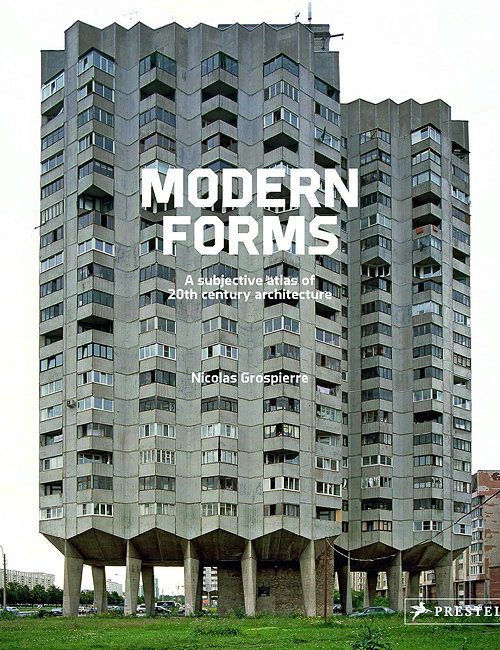
Modern Forms: A Subjective Atlas of 20th-Century Architecture
Form precedes function in this stunning visual archive of nearly 200 images of modern architecture by award-winning photographer Nicolas Grospierre. At once a reference work and a personal exploration of modernist architecture, this fascinating collection of Nicolas Grospierre's photography covers structures built between 1920 and 1989 in Europe, North and South America, the Middle East, North Africa, and Asia. These images range from iconic buildings, such as the Gateway Arch in Saint Louis and the Ukrainian Institute of Scientific Research and Development in Kiev, to little-known structures such as the Balneological Hospital in Druskininkai, Lithuania or Oscar Niemeyer's unfinished International Fair Grounds in Tripoli.
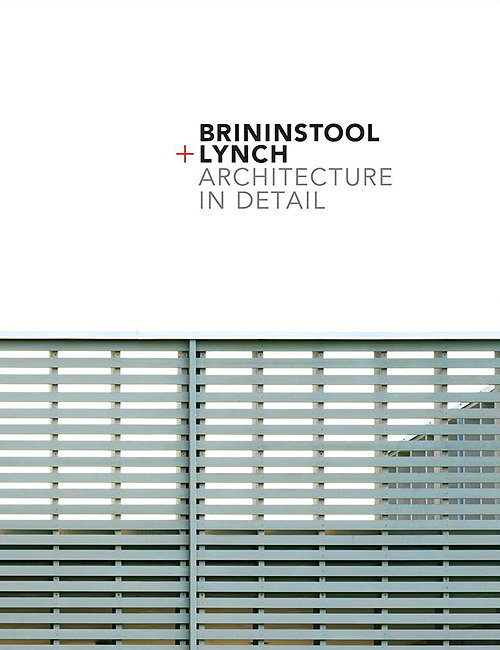
Brininstool + Lynch: Architecture in Detail
Founded in Chicago in 1989, the architectural firm Brininstool + Lynch has become known for modern works that are rooted in the exceptional architectural culture of Chicago but also epitomize the best of contemporary design: elegant spatial compositions, remarkable aesthetic quality, refined details. In this volume, partners Brad Lynch and David Brininstool have selected 15 built works that represent the breadth and depth of the practice as well as its character, at once sophisticated and straightforward. Among the projects are the Racine Art Museum, designed around a collection of crafts in ceramic, fiber, glass, metal, and wood; city and country houses in Illinois and Indiana; and a series of large-scale urban residential buildings; as well as galleries, offices, a lounge, and a state-of-the-art 'sound lab' featuring an ever-changing LED light fixture.
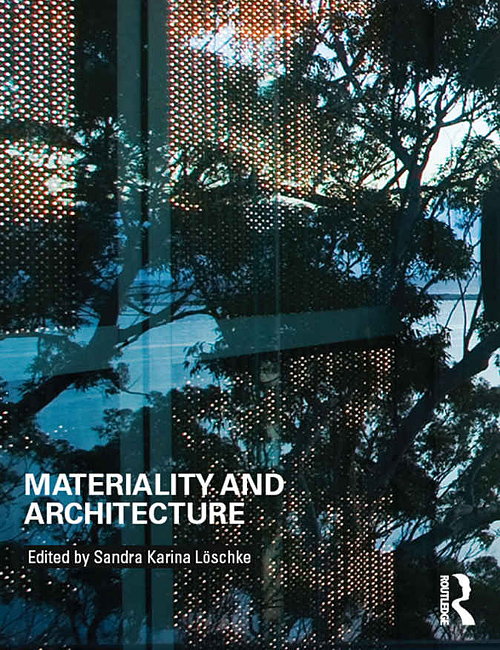
Materiality and Architecture
Materiality and Architecture extends architectural thinking beyond the confines of current design literatures to explore conceptions of materiality across the field of architecture. Fourteen international contributors use elucidate the problems and possibilities of materiality-based approaches in architecture from interdisciplinary perspectives. The book includes contributions from the professions of architecture, art, architectural history, theory and philosophy, including essays from Gernot Böhme, Jonathan Hill and Philip Ursprung.
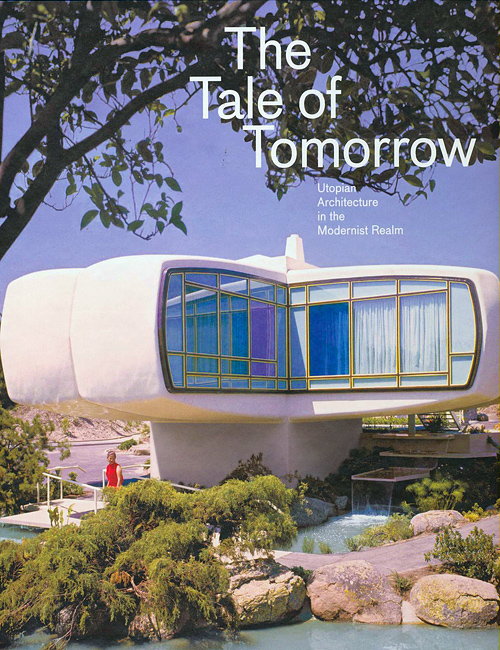
The Tale of Tomorrow: Utopian Architecture in the Modernist Realm
The retro-futuristic epoch is one of the most visually spectacular in architecture's history. The Tale of Tomorrow showcases the radical ideas, rediscovered photos, and visionary structures of utopian buildings from the twentieth century that will never go out of style.
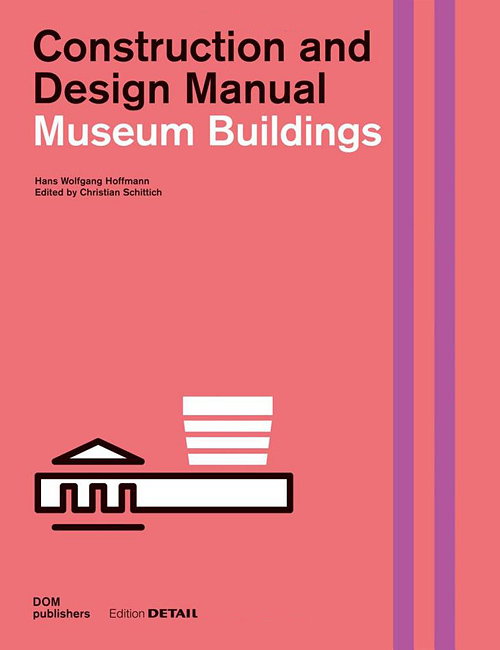
Museum Buildings: Construction and Design Manual
The museum as a building type and architectural space bear a complex relationship to each other. Architecture competes with the exhibited objects on the one hand and gives way to them on the other, enabling the museum to develop as regards content. Between these two poles, this book is intended to facilitate communication in the planning process.
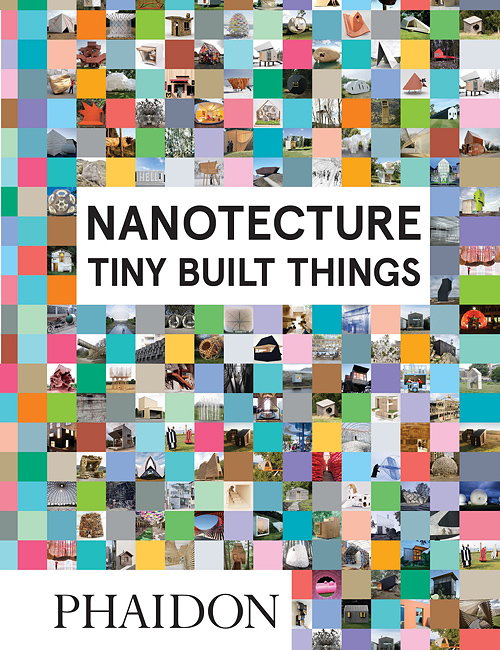
Nanotecture: Tiny Built Things
Nanotecture features an inspiring, surprising and fun collection of 300 works of small-scale architecture including demountable, portable, transportable and inflatable structures as well as pavilions, installations, sheds, cabins, pods, capsules and tree houses.
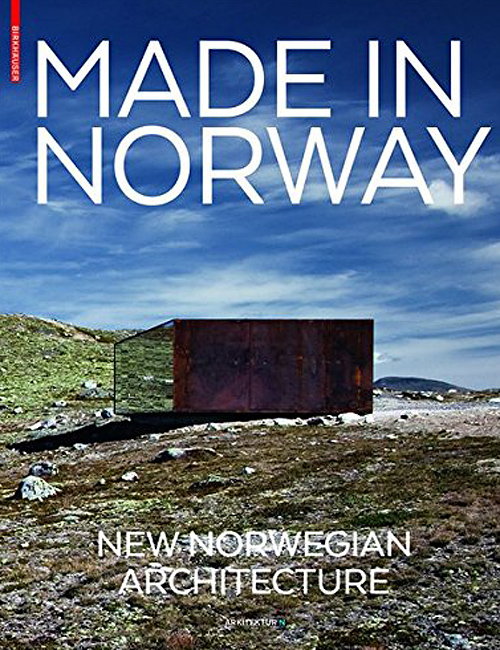
Made in Norway: New Norwegian Architecture
Made in Norway: New Norwegian Architecture presents a selection of 40 new examples of the best contemporary architecture Norway has to offer. The projects are examples of how architects in Norway have reacted to the challenges of today.
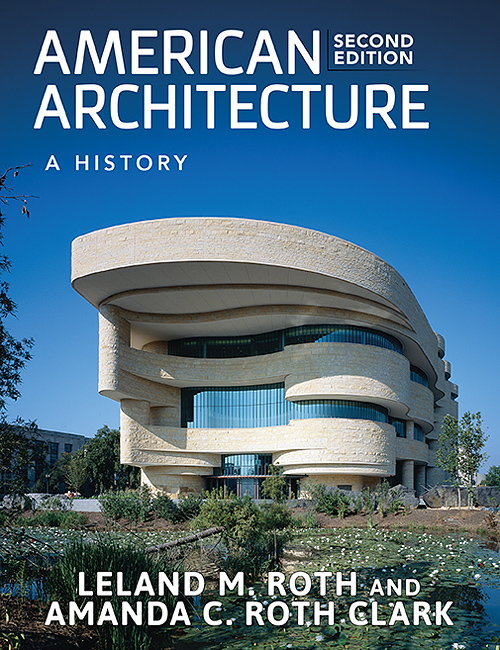
American Architecture: A History
Eleven chronologically organized chapters chart the social, cultural, and political forces that shaped the growth and development of American towns, cities, and suburbs, while providing full description, analysis, and interpretation of buildings and their architects. The second edition features an entirely new chapter detailing the green architecture movement and architectural trends in the 21st century. Further updates include an expanded section on Native American architecture and contemporary design by Native American architects, new discussions on architectural education and training, more examples of women architects and designers, and a thoroughly expanded glossary to help today's readers.
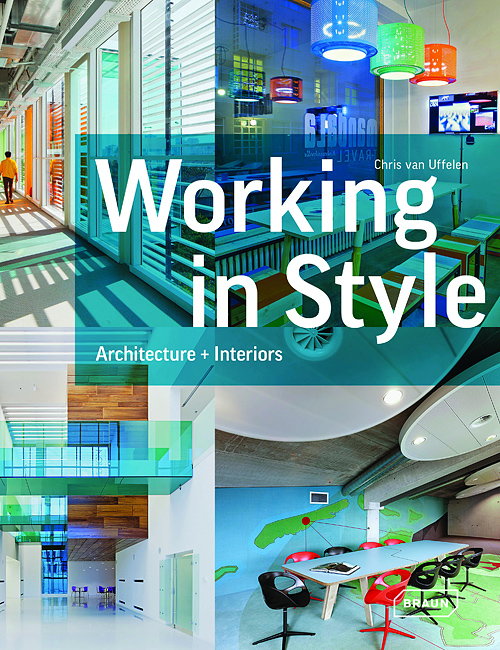
Working in Style: Architecture, Interior, Design
Working in Style features examples from around the world that not only incorporate the defining characteristics of an employer but also apply the latest findings of workplace research. The results are veritable office landscapes, ranging from the creatively designed work space of a start-up via a multi-functional subdivided office without fixed work stations, to elaborately equipped and prestigious office spaces.
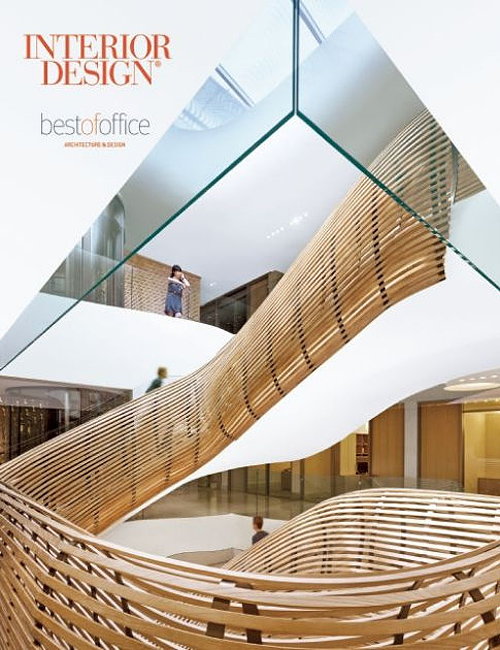
Best of Office Architecture & Design, Vol II
Best of Office Architecture & Design, Vol II is a compilation of the best work done in the office sector today, featuring over 40 international projects from the highest level design firms. Diversity of projects will range from the smallest creative studios to major corporate headquarters by both industry stalwarts and start-ups.
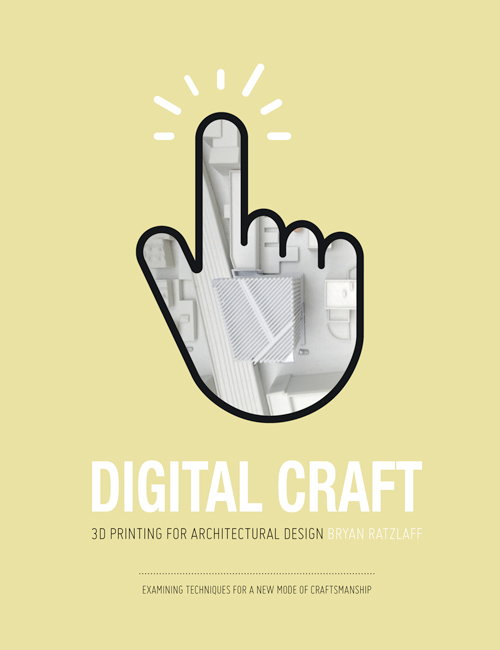
Digital Craft: 3D Printing for Architectural Design
3D printing is commonly used in architectural practice for producing design process models, and while this mode of use continues to be adopted, the aesthetics and stylistic potential of the technology's output remain unexplored by many architects. Digital Craft examines the relationship between the architect, the model and the 3D printer, creating a better understanding of how when integrated, these entities can lead to a refinement in the communication of architectural design with 3D printing.
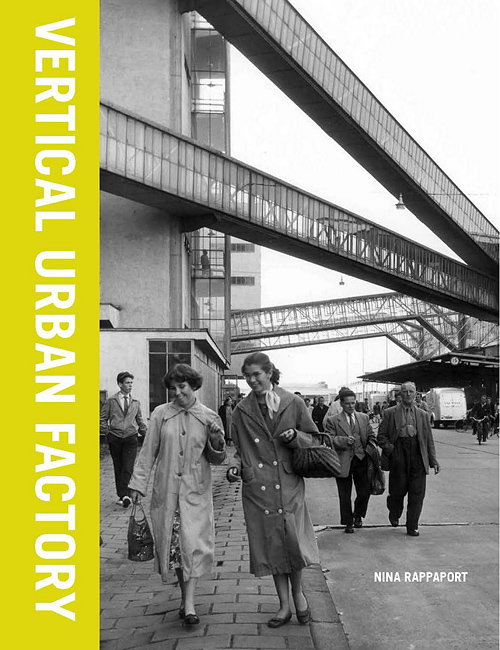
Vertical Urban Factory
Vertical Urban Factory looks at both contemporary and modernist factory designs in urban settings and demonstrates how modern factories can be integrated into a city environment while being smaller, greener, and more efficient. Building on research from an exhibition of the same name that originally opened in 2011, Nina Rappaport explores old and new design techniques for the construction, mechanization, and operation of vertical factories that contribute to a vital urban environment.
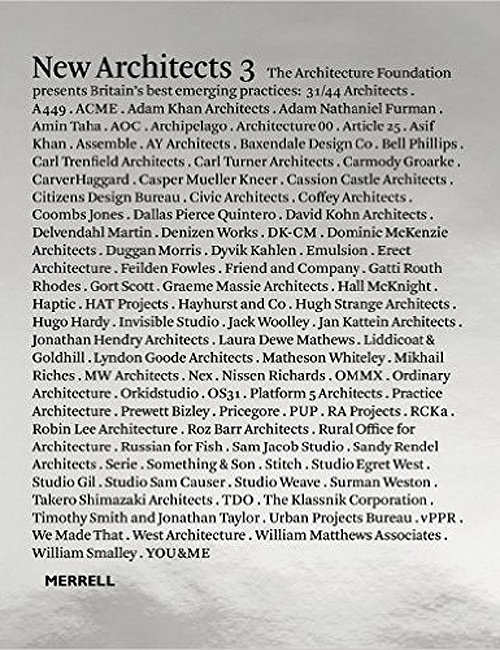
New Architects 3
New Architects 3 is the Architecture Foundation's landmark guide to the best architectural practices set up in the UK in the past decade. This book features over 85 of the most innovative and talented young architectural practices, many of which are destined to become the leading practices tomorrow.

Buildings of London
Buildings of London is a bright, fun way to tour the capital through the eyes of an architect. Taking in the well-known with the less familiar, architect of 30 years Roger FitzGerald leads the reader on a journey around the city through his evocative paintings, combining his keen eye for detail and construction with a fascination for discovery.
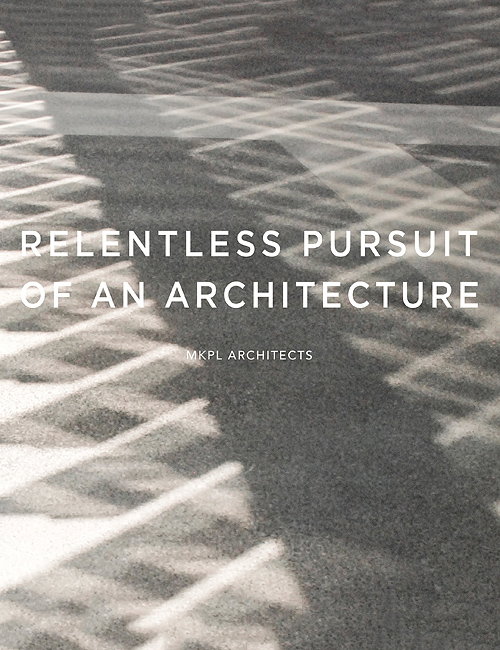
Relentless Pursuit of an Architecture: MKPL Architects
Relentless Pursuit of an Architecture captures the design conscience of the studio through the writings of its founding directors. It is as much a meditation on "the practice of practice" as a presentation of MKPL's most important work. It's also a window on the unique urban, regulatory, commercial, and landscape context of Singapore. The book unfolds as manifestations of MKPL's inventive spirit via projects in Singapore and elsewhere in Asia, presenting an in-depth reflection on project particularities and processes, as well as outcomes.
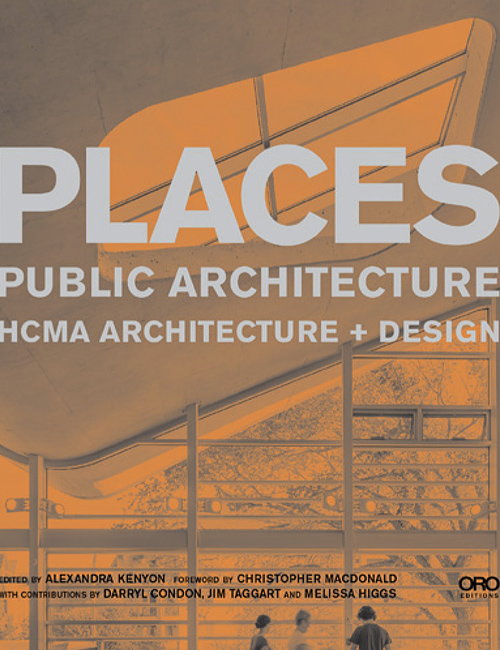
Places: Public Architecture by Hughes Condon Marler Architects
In its considered response to the globalization of culture, HCMA has consistently achieved an architecture that is expressive of time and place, and uniquely interprets Canadian values of openness and inclusivity. The firm's concentration on civic buildings denotes a deeply rooted concern for community, and recognition that in contemporary pluralistic society's schools, libraries and community centres are both symbolically and literally, the meeting places for all sectors of our communities regardless of demography, faith or ethnicity. PLACES: Public Architecture explores a selection of key projects by HCMA which offer insight into the firm's specific approach to community building through public architecture.
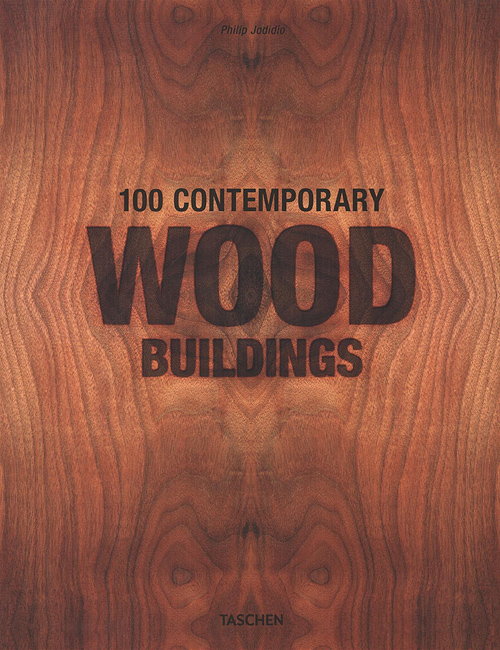
100 Contemporary Wood Buildings
100 Contemporary Wood Buildings explores how architects around the world have created and invented with this elementary material. Featuring follies, very large buildings, and ambitious urban renewal schemes, it celebrates the diverse deployment of wood from architects around the world.
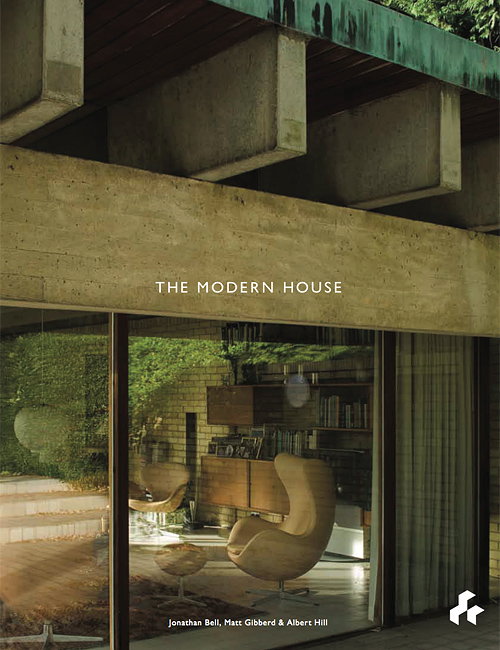
The Modern House
The Modern House is a lavishly illustrated showcase of some of the most iconic still-existing Modern homes in the UK. The book is in part the narrative of how important examples of Modern houses were commissioned and built, and in part an exploration of Modernism's convergent characteristics of functionalism, truth to materials, owing space and natural light within a space for living.

The New Van Gogh Museum
This book documents the expansion of the Van Gogh Museum with lustrous images and elegant texts. Complementing images from acclaimed architecture photographers Luuk Kramer and Ronald Tilleman, architect and critic Maarten Kloos examines the development of the museum as set against the history of Museumplein, while architect Hans van Heeswijk discusses the reasoning behind the design.
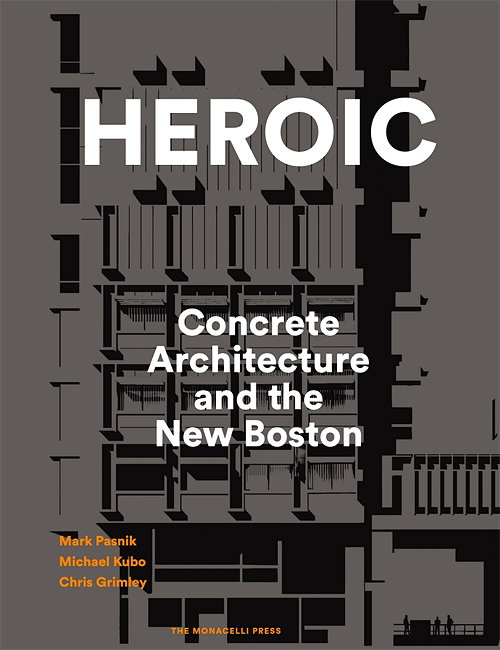
Heroic: Concrete Architecture and the New Boston
Often problematically labeled as "Brutalist" architecture, the concrete buildings that transformed Boston during 1960s and 1970s were conceived with progressive-minded intentions by some of the world's most influential designers, including Marcel Breuer, Le Corbusier, I. M. Pei, Henry Cobb, Araldo Cossutta, Gerhard Kallmann and Michael McKinnell, Paul Rudolph, Josep Lluís Sert, and The Architects Collaborative. Today, when concrete buildings across the nation are in danger of insensitive renovation or demolition, Heroic presents the concrete structures that defined Boston during this remarkable period-from the well-known Boston City Hall, New England Aquarium, and cornerstones of the Massachusetts Institute of Technology and Harvard University to the already lost Mary Otis Stevens and Thomas F. McNulty's concrete Lincoln House and Studio; Sert, Jackson & Associates' Martin Luther King Jr. Elementary School - with hundreds of images; essays by architectural historians Joan Ockman, Lizabeth Cohen, Keith N. Morgan, and Douglass Shand-Tucci; and interviews with a number of the architects themselves.
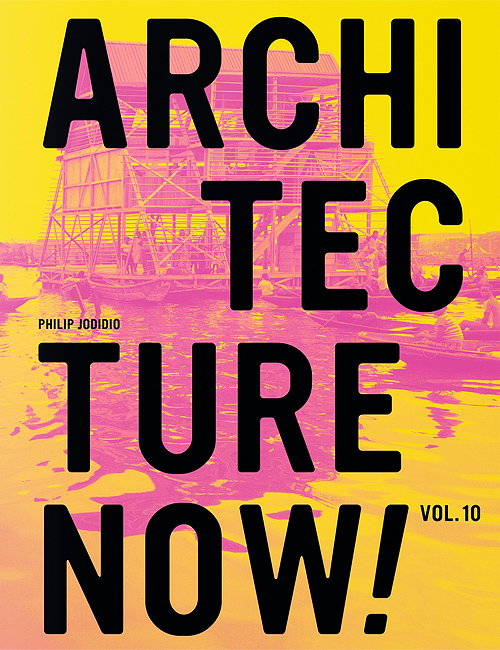
Architecture Now! Vol. 10
The best-selling series of Architecture Now! celebrates its tenth edition with more than 70 international projects. From Frank O. Gehry's shining Louis Vuitton Foundation in Paris to Zaha Hadid's curving Heydar Aliyev Center in Baku, take a global tour through the architectural practice emerging today, and defining tomorrow.
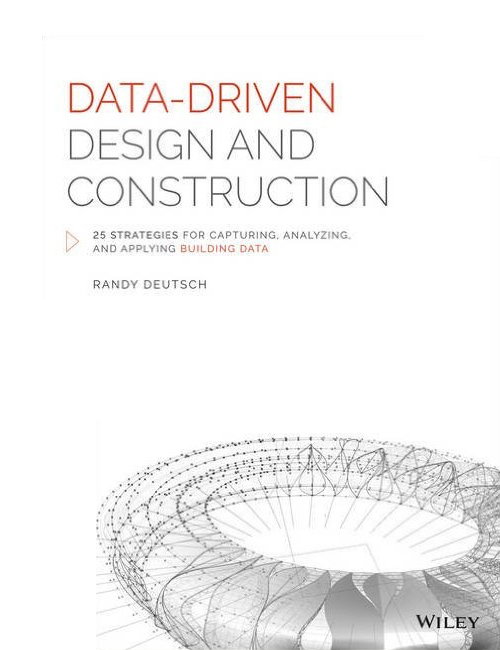
Data-Driven Design and Construction
Written for architects, engineers, contractors, owners, and educators, and based on today's technology and practices, Data-Driven Design and Construction: 25 Strategies for Capturing, Applying and Analyzing Building Data addresses how innovative individuals and firms are using data to remain competitive while advancing their practices. This book documents how data-driven design is the new frontier of the convergence between BIM and architectural computational analyses and associated tools.

Graphic Design for Architects: A Manual for Visual Communication
Graphic Design for Architects is a handbook of techniques, explanations and examples of graphic design most relevant to architects. The book covers a variety of scales of graphic design, everything from portfolio design and competition boards, to signage and building super-graphics - to address every phase of architectural production.
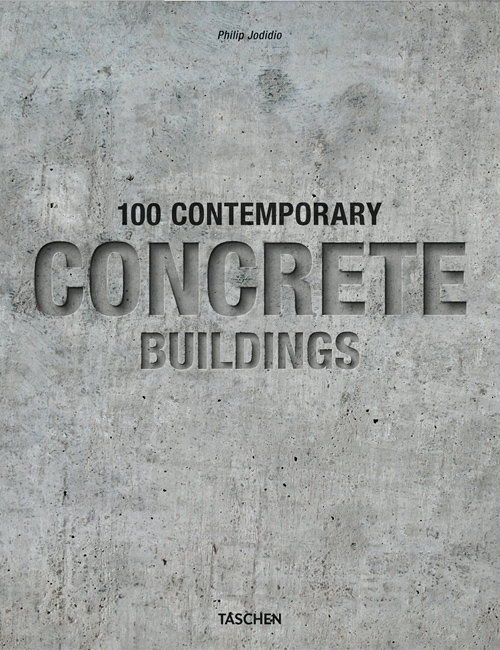
100 Contemporary Concrete Buildings
This two-volume book highlights the best work done in concrete of recent years. It features star architects such as Zaha Hadid, Herzog & de Meuron, and Steven Holl, but also surprising new architects like the Russians SPEECH, and rising stars of the international scene like Rudy Ricciotti from France, as well as artists such as James Turrell, who turned the famous concrete spiral of Frank Lloyd Wright's Guggenheim in New York into the setting of one of his most remarkable pieces.

The Future of the Skyscraper
In this volume, Bruce Sterling describes four possible futures that might shape future towers, presenting a choose-your-own-adventure of potential futures for architecture, some of them terrifying in their nearness. We peer up at skyscrapers old and new, visit their highest floors, turn them this way and that to see them clearly through the psychology (Tom Vanderbilt) and physiology (Emily Badger) of living and working on high, and through the lens of policy in the low-rise counterexample of Washington, DC (Matthew Yglesias).
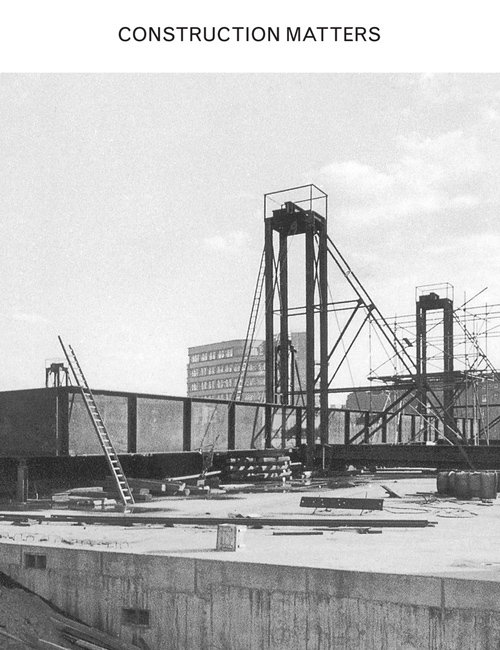
Construction Matters
Construction Matters examines the way that architects understand and respond to technological innovation through the creation of new types of spaces, and the materials through which an architectural idea finds its physical realization. Understanding the properties of different materials is indispensable for the creation of architecture that is original, powerful, and meaningful. Organized into chapters on the major methods of construction-masonry, concrete, steel, and wood-Construction Matters examines specific technologies that experienced major transformations in the last century, or were newly invented: a new material, jointing technique, or fabrication procedure for example.
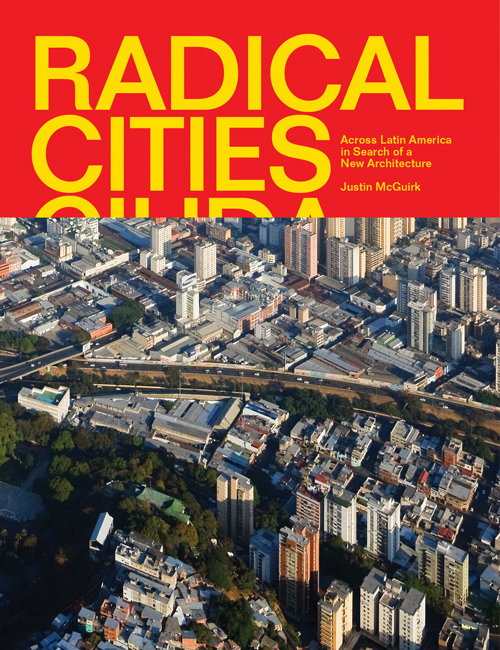
Radical Cities: Across Latin America in Search of a New Architecture
What makes the city of the future? How do you heal a divided city? In Radical Cities, Justin McGuirk travels across Latin America in search of the activist architects, maverick politicians and alternative communities already answering these questions. From Brazil to Venezuela, and from Mexico to Argentina, McGuirk discovers the people and ideas shaping the way cities are evolving.
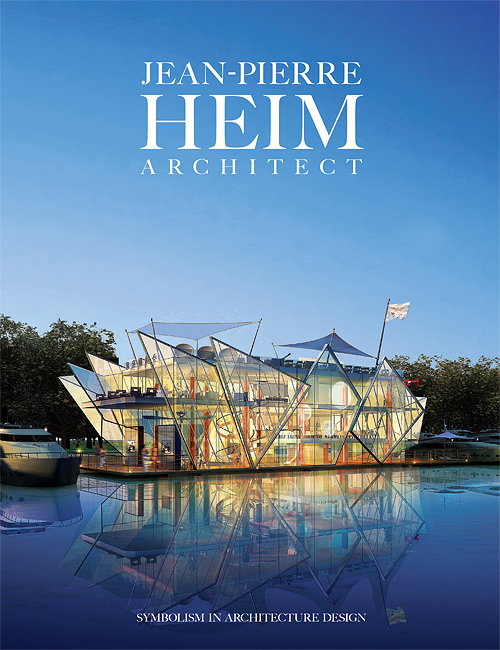
Symbolism in Architecture Design: Jean-Pierre HEIM Architect
Symbolism in Architecture Design opens a panoramic window to the imaginative world of architecture and interior design from award-winning firm Jean-Pierre HEIM and Associates based in New York, Paris, Shanghai, and Athens. Showcasing private residences, corporate offices, retail stores, restaurants, hotels and showrooms in the U.S., China, Greece, UAE, and France, this book with over 250 color images demonstrates Heim's gift for creating unique, desirable contemporary environments.
